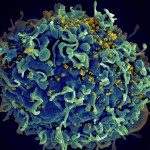Présentation
Rift Valley fever (RVF) is a an arthropod-borne emerging viral disease that primarily affects domesticated animals (such as cattle, sheep and goats) and humans, with recent outbreaks in sub-Saharan Africa, Madagascar, and the Arabian Peninsula, killing hundreds of thousands of animals and more than a thousand humans. RVF is characterized by necrotic hepatitis, hemorrhagic fever, and abortions with high mortality among newborn and young animals. Most patients suffer a self-limiting, febrile illness. However, a subset of patients develop severe forms characterized by hepatitis with fatal hemorrhagic fever, encephalitis or ocular disease, with a mortality rate ranging from 1 to 14 %. The large variation in individual response to the infectious agent suggests the existence of host genetic factors influencing susceptibility to RVF.
We have identified a highly susceptible mouse strain (MBT/Pas) and we have shown that this strain has an impaired activation of the type I interferon innate immune response. We have also described immunological abnormalities associated with this high susceptibility. We have shown that the MBT/Pas strain succumb from acute hepatitis, while the less susceptible BALB/cJ mice recover from it but die lated from encephalitis. Using genetic approaches (QTL mapping, congenic strains), we have identified critical genomic regions. One of these regions contains the Rnf213 gene which we have shown to influence the susceptibility to RVF.















